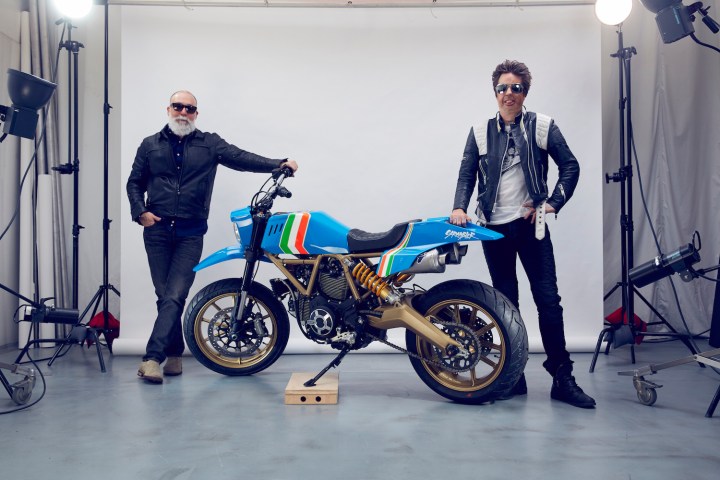
That hasn’t stopped Ducati from pursuing its first-ever Scrambler “Maverick” in conjunction with renowned tattoo artist Grime. The Italian manufacturer says it chose Grime because of his unique style, self-expression, and “ability to effect change in the arts.”
For those of you unfamiliar with Grime’s work, in the 25 years since the San Francisco-based artist started tattooing, he has grown into something of an international public figure. His particular style includes bold medieval and mythological figures. In addition to body art, Grime dabbles in photography, canvas, board, and graffiti, with much of his pieces selling out in minutes during art exhibitions.

“Grime has always carved his own path, and as a result, he’s become one of the most respected tattoo artists, with a distinct style embodying free-spirited creativity –and the Ducati Scrambler represents these same attributes,” said Ducati North America CEO Jason Chinnock.
Ducati says it created the Scrambler Maverick project, which will have successor designs, to “empower unique mavens by embracing their creativity and individuality.” Each year, Ducati will select two new mavericks to work with local Ducati North American dealers to customize Scrambler Icons with only Ducati parts, fabrication, and a small budget. The Italian bike builder will look outside the motorcycle industry for its mavericks, as it believes their customization will be unlike anything seen before within the bike world.
At the conclusion of the project, all proceeds from the Maverick’s build (which, we assume, means auctioning of the bike itself) will be donated to the Maverick’s charity of choice. Kudos, Ducati. Not only does this project highlight up-and-coming artists, the results benefit charities that are close to the hearts of each Maverick. We hope more brands mimic Ducati’s model.


